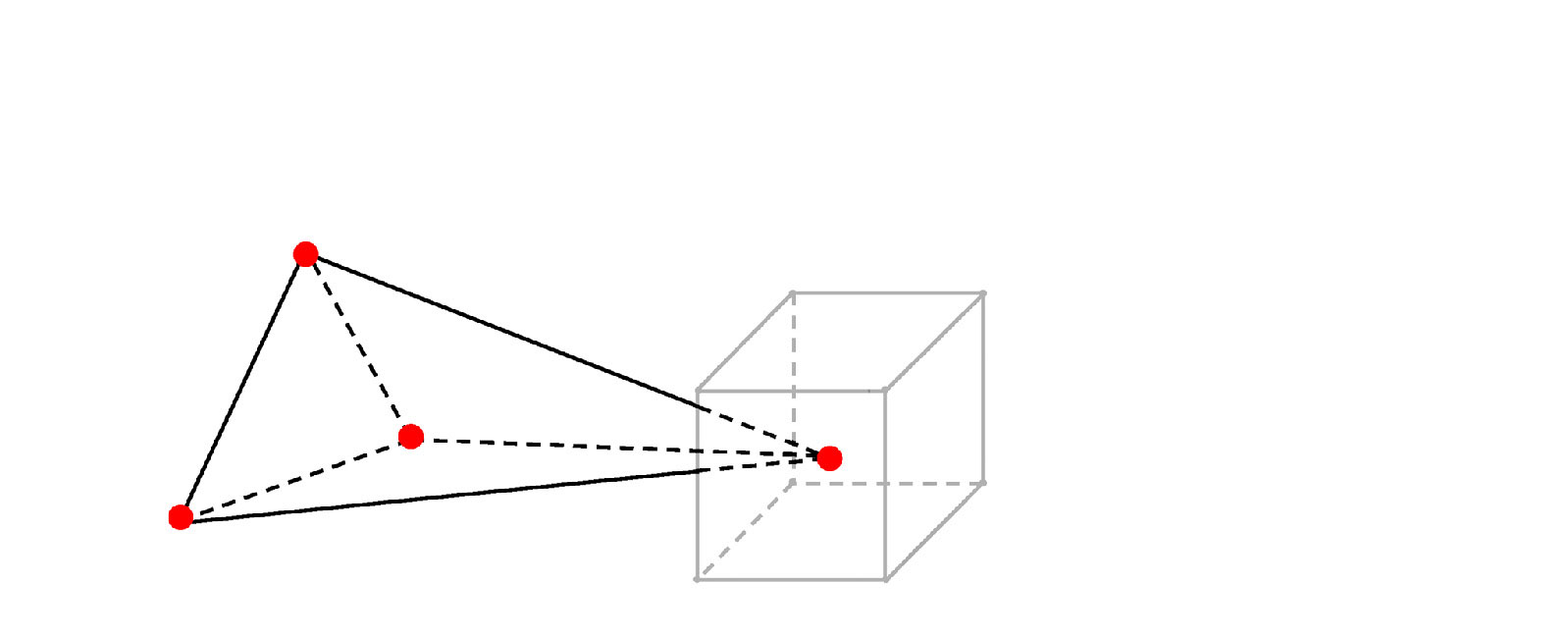
A Wedge in a Cube: a Schematic Self-Portrait of a Researching Artist
25 October 2019 • Pavel Khailo
The word ‘research’ is both a trickery word and an expletive in arts. It acts as an operator in professional rhetoric, providing access to and covering a wide range of various practices. Both big institutions targeted at a fancy exhibition product and independent platforms which aspire for a critical approach and disruption need research these days. Such popularity is not accidental: research is rational, systematic, it deals, or pretends to deal, with knowledge production, and it seeks for objectivity.
This fits well in the logic of Post-Fordism and the world inclined towards a transhumanist techno-utopia where, as Franco ‘Bifo’ Berardi notes, “the more intelligence is free from the limitations and ambiguity of sensibility, the more an intelligent organism will be effective in the struggle for survival and supremacy.”[1] Knowledge conceived as data processing with further increase in the price for this data becomes the most valuable renewable resource.
In this text, I don’t try to cover all options of the activity which you can call a piece of artistic research, or which is generally called so. I’m rather interested in examining the connections which occur in producing, exhibiting, and, in a broader context, distributing artistic research since it seems that a focus on form and content often overshadows the relations and links which an artwork reveals and establishes.
Highlighting these connections is important for getting access to a work of art not only at its own level but also at the level of a certain configuration it is placed in. Analysis of the inclusion in a broader context gives material to work with conventions established in contemporary art and also allows influencing related areas, creating new possibilities and platforms for action. Working with the links and connections and problematising them is inherent in the logic of research itself. My objective is to examine the conditions of artistic research practices both inside and outside the art system in order to identify potential strategies of using these connections.
In commodo lectus imperdiet, convallis est ut, efficitur nisi. Nulla scelerisque sollicitudin aliquam. Vestibulum rutrum lacus et convallis molestie. Nam dictum erat purus. Duis consequat elementum congue. Cras metus tellus, rutrum eget lorem a, posuere tristique nunc. Donec tincidunt ante at ligula aliquet blandit. Ut volutpat mi et ex tristique, a porttitor ante fringilla. Quisque feugiat turpis nec lorem mollis dictum. Integer vulputate libero quis neque pharetra, pretium viverra ex euismod.

Metaphoric expression of such analysis is a self-portrait – undisguised self-admiration which can be reflective and constructive at the same time. Making schemes of the research connections, I evaluate them primarily against my own practice, although I speak of others. I use the term following an observation made by Isabelle Graw[2] who defines a self-portrait as a component of artist’s self-promotion and self-presentation but also notes that it isn’t limited to this function. Through the example of Gustave Courbet’s works, art historian shows how a self-portrait can reflect the artist’s status within economic relations.
Graw suggests regarding the Courbet’s painting The Meeting or Bonjour, Monsieur Courbet as proto-institutional critique. According to Isabelle, Courbet not just depicts the meeting with his patron Alfred Bruyas but unravels and reverses his dependence on the patron. I quote this analysis to emphasise that this text is an attempt to look at the situation in which I have to act from a distance.
The examined connections are represented schematically and require further practical work and description.
In commodo lectus imperdiet, convallis est ut, efficitur nisi. Nulla scelerisque sollicitudin aliquam. Vestibulum rutrum lacus et convallis molestie. Nam dictum erat purus. Duis consequat elementum congue. Cras metus tellus, rutrum eget lorem a, posuere tristique nunc. Donec tincidunt ante at ligula aliquet blandit. Ut volutpat mi et ex tristique, a porttitor ante fringilla. Quisque feugiat turpis nec lorem mollis dictum. Integer vulputate libero quis neque pharetra, pretium viverra ex euismod.
The First Line Segment

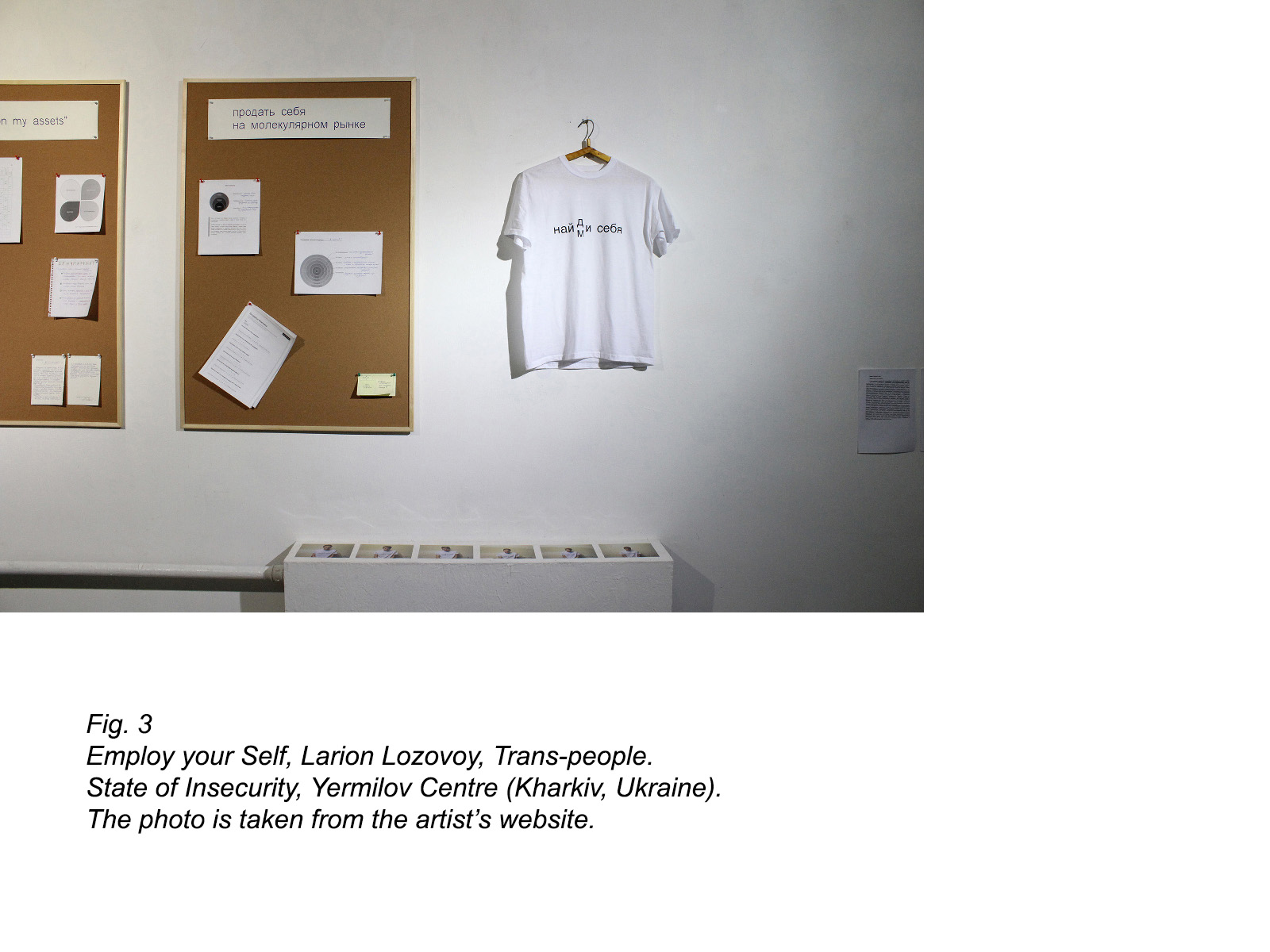
Let’s start from the two dots, one of which is a fragment of reality and the other is a work of art. The line segment which connects these dots is research. It could be marked in another way, as inspiration, epiphany, or whatever else, as well as just left unnamed. But it’s the term ‘research’ which occurs more frequently, visualising the link. A viewer is promised that a work of art they see is something bigger than a fantasy or a feeling, or a standpoint. This is the result of examining the material. Usually, research implies that work is based on data collection and analysis. Volumes of data and methods can vary, be re-invented or even falsified. However, it’s expected that facts were taken into consideration and there are enough of them for a work of art to be accomplished. Enough means greater than zero and it also means that the process prior to creation gains significance and starts to affect the end dot.
Research transforms the artist’s speech and overall image, adding some features as if they were a scholar, a business analyst, or someone else. Critical attitude and reflexivity, knowing the methods and how to present them become valuable and transformable skills in the artistic labour market. The ‘as if’ part of the description is crucial here: unlike academic or even commercial area, artistic research doesn’t have a known and well-established set of attributes and criteria, as well as it is not subject to verification. Existing in the ‘as if’ mode allows weakness and therefore allows seeking out loopholes and penetrating the territory of others. The ‘as if’ mode introduced by Martha Rosler and then developed by Seth Price in his essay Dispersion, defines “an approach, where the conceptual work cloaks itself in other disciplines (philosophy being the most notorious example), provoking an oscillation between skilled and de-skilled, authority and pretense, style and strategy, art and not-art.”[3]
The figure of a researching artist has been a phenomenon in Ukraine for the last decade. It’s interesting that this type of practice has replaced and continued the figure of an activist artist with a similar interest to the documental. There has been a shift from the logic of direct action and fixation to other modes of diving into the material and presenting it. Connection with a starting point in the reality had become more complex. However, when we see the term ‘research’ in the work’s explication, we never fully know what stands behind it. Moreover, we can’t be sure there is anything at all. This is what makes research both a shelter and a trap. With its combination of evading scrutiny and desiring to affirm, artistic research transforms the entire concept of what (un)familiarity can look like and who regulates the mechanisms of its development and delivery.
Even when reduced to ascetic rationality, a work of art is able to maintain elements that don’t fit in and execute a productive malfunction which resists rapid consumption. This is how it works, for instance, in Larion Lozovoy’s work, Employ your Self (from the exhibition Trans-people. State of Insecurity, Kharkiv, Yermilov Centre, 2016). The artist approaches guides on self-presentation and self-management to define sources of portraying self-exploitation as emancipation practices. His research is focused on mechanisms which enable the economy to influence the subject’s formation. By strictly following the advice given in the books, the author presents to the audience a process, an archive of his attempts to become more efficient. Filled-in tables, lists and plans are presented on the corkboards which are items of office equipment. There are also several self-portraits which document Lozovoy on different days but in the same T-shirt with the explicitly promotional slogan ‘найм/ди себя’ (employ/find yourself). The T-shirt itself is also included in the exposition. All the components compiled together – text, images, an object – construct the general corpus of the work. Considering the similarity of their meanings, the abundance of mediums persistently forces viewers to believe that all these are evidence. But there’s no guarantee to that.
Actually, a viewer doesn’t know whether there was a process of following the instructions preceding the exposition or these are just texts written in one sitting and accompanied by quickly made photos and a T-shirt. Even if all these actions took some time (and it’s hard to tell from the photos if it was long), it’s unclear what do they mean for the artist. The given research doesn’t inform if such actions bring the artist some results except the fact that he made it through the exhibition deadline. The work can’t be confirmed or verified but it makes viewers experience the situation of self-employment without necessarily being required to be true. It is telling that the author’s methods based on meticulous documentation are in line with the advice provided by self-presentation guides to keep a clear record of all activities.
One of the work’s distinguishing features is a reflexive approach to the process of aestheticisation – attention to the mechanisms and means of representation. In his essay ‘Research as Aesthetics,’ Markus Degerman described such an approach as follows: “...it is in aesthetics that there is a possibility to avoid a further aestheticisation. In that case, greater attention and more importance should perhaps be devoted to the forms and implementations in which, say, seminars, archives or publications are expressed. This would create an opening for new meanings and functions.”[4] A twofold effect of artistic research becomes its benefit: arrogating didacticism to itself, it retains the properties of art and its inability to disguise as the natural order of things. Artistic research is the most efficient in producing suspended meanings, in its ability to analyze the material and put its own work to doubt.
The Second Line Segment
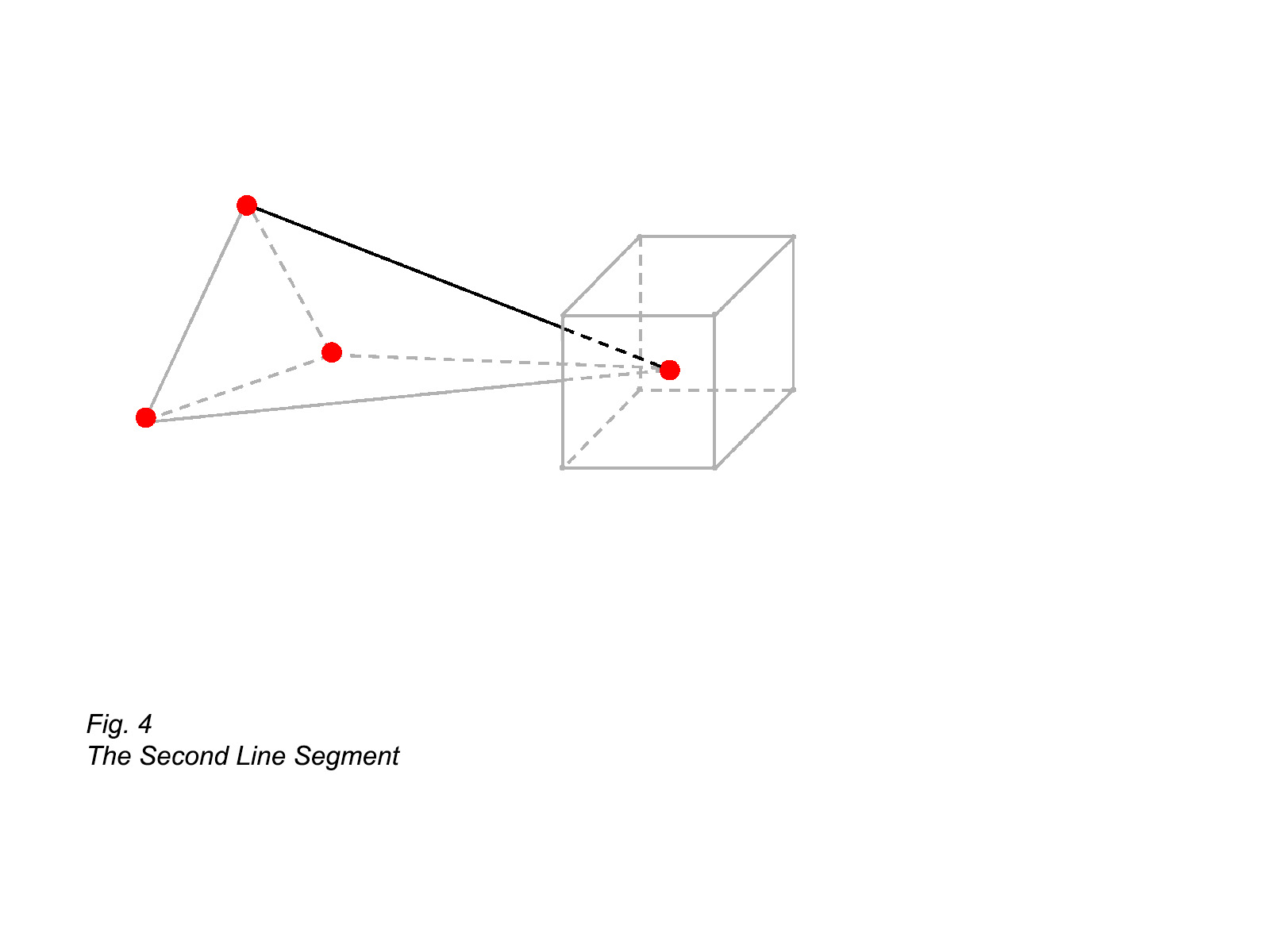
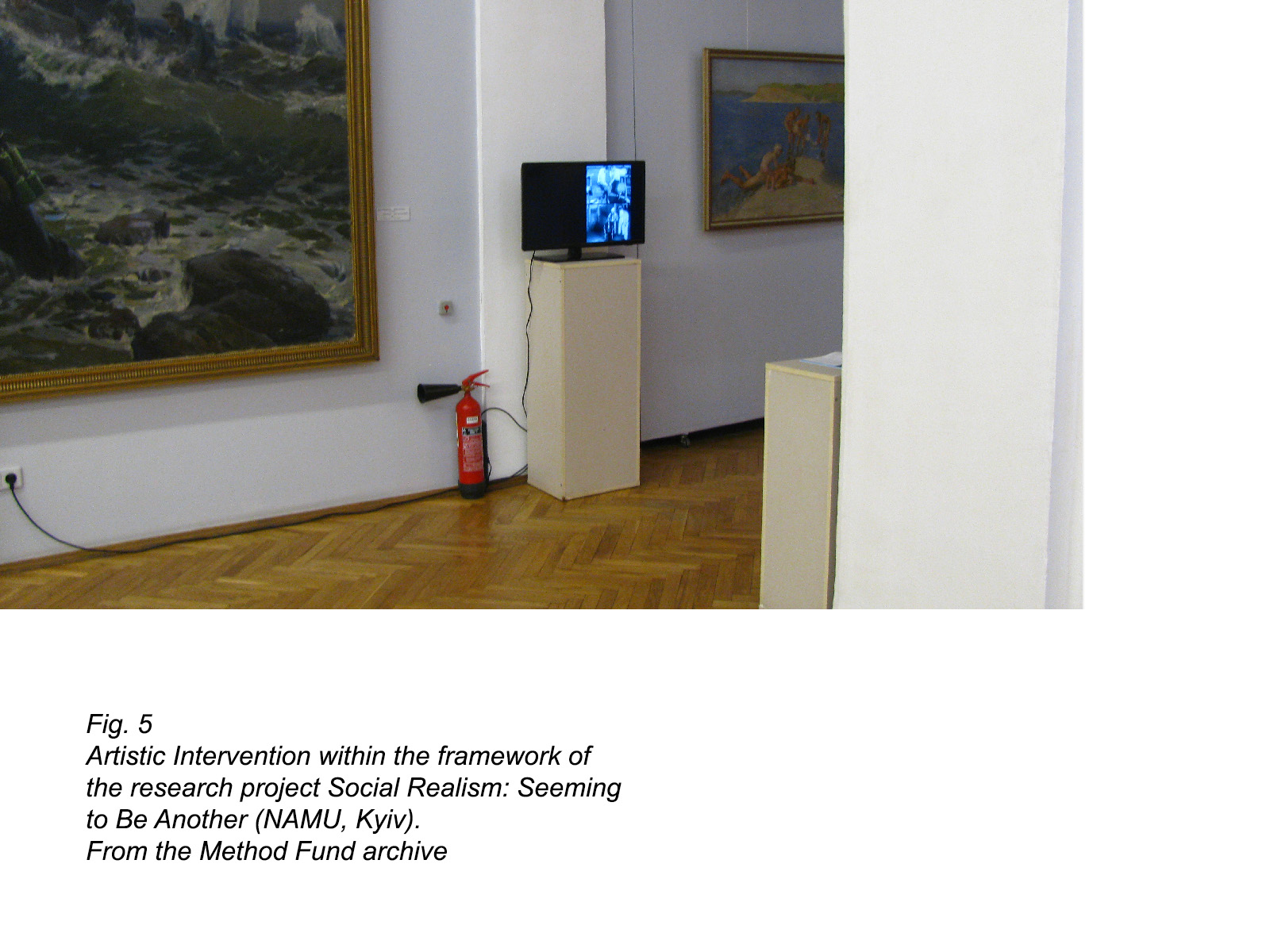
Let’s examine another connection emerging between scientific and artistic research. Especially since the development of the latter is directly related to the transformations in the educational system. In the abovementioned quote, Degerman speaks of seminars, archives, and publications for a reason. The widespread introduction of the Bologna process standardised artistic studies, putting them in a general educational context. On the one hand, it helped escape from the all-absorbing market in the West. The resource of academic institutions allowed artists to earn a degree and teach more, providing an opportunity to maintain stable living conditions at least to a certain extent, while institutions, along with welfare programmes in general, experienced cuts in funding. Connection to the academy also affected artistic language and its means, bringing new expressive mediums and another work temporality to arts. This is not to say that there were no research and discursive practices before, but they significantly grew in number while rooting in the educational system. On the other hand, these gains came at a price of economising scientific environment, including various audits and performance checks. Artistic research became a new territory but didn’t offer a way out of the system. Its role and possibilities in the process of science and art transformation were analysed in detail by Western critics. The problem is that it’s impossible to directly transpose such conclusions to the Ukrainian context.
Contemporary art in Ukraine is separated from the official educational and scientific system, more so than church from state. On the rare occasions when it forces its way through the system, it is not for long. The figure of an artist who uses research practices emerges without relying on academic institutions here but rather owing to a lack of critical knowledge in humanitaristics. Independence from weak scientific institutions, declared as a political view, is rather a problem of a lack of access. Instead of taking away the instrumentarium of academia and occupying disciplines affected by conservatives, artistic research slips into the ghetto of contemporary art, with its way of thinking in terms of temporary exhibitions, economic instability, opportunism, and a constant need to take on new subjects in order to stay in the field of vision. The trap of the ‘as if’ research doesn’t work if it doesn’t even try to slip into other contexts but transforms its strong weakness into a weak strength of informing/persuasion within the exhibition hall. In such a case, research is at risk of functioning only as a register and affirming what is already known. That is not to suggest that research should abandon arts but to request to revise its role.
Work of the independent organisation Method Fund is among a few exceptions. Their initiative Socialism: Seeming to Be Another made it possible to create a frame of work, unique for the Ukrainian context: it is designed for the long term, embraces different registers, and is open to various participants. The research and artistic seminar which took place in the National Art Museum of Ukraine and lasted for about a year included lectures, discussions, interventions into the exhibition space, publications, and dialogues communicated in a museum space. What seems to be of greatest interest is the structure of communication and interaction established in this project. It goes beyond a traditional practice ‘for the sake of the exhibition’ and at the same time, is not limited to the already conventional perception of collectivity as of creating another piece of art. Such a constellation can’t be called stable or long-term. It is, after all, designed for a project. But it’s in such a constellation that an institution becomes a platform for exchanging ideas within a small group and a space for thinking outside of the exhibition mode and flashiness of regular art events, absorbed by the PR mode.
In the circumstances of a usual exclusion from the academic processes, such a territory where, as in the case of Socialism: Seeming to Be Another, it just worked out to involve museum workers, creates a fragile shape of resistance. The seminar doesn’t transform the institution in which it intrudes that much but rather creates its own imaginary institution there which has a different rhythm and complicates the optics. Meanwhile, for casual viewers, these two parallel institutions disturb the museum perception they are used to. Coming in contact with the seminar or the added object, a viewer could see it as a part of the exhibition but as if it was a foreign element. While the changes that the seminar is trying to incorporate don’t come from a position of power or subordination through redeployment of external resources.
For comparison, it’s worth recalling the initiative called Museum Open For Renovation which has spread to a lot of peripheral non-artistic museums in 2016-2018. This project, supported by the USAID, provided the technical support needed by small institutions. But at the same time, it brought into play a treadmill of exhibitions, introducing short-term projects instead of structural changes. The initiative’s description mentioned that ‘developing and implementing a PR concept for each museum’ was among its major tasks. Now it’s hard to tell how well this objective has been achieved: maybe, coordinators of the project and a wide range of participants just managed to sneak away from it. What is indicative is its inclusion itself, together with instrumentalisation of research practices, as well as contemporary art in general, which is characteristic of organisations that fund such projects. Art acts as a bright smokescreen of pseudo-modernisation, as an advertising banner of success and creativity which covers up a shabby institution in order to introduce a fluctuant project economy, service approaches, and showiness of rapid exhibitions, which can be critical to the agenda dictated by the government but rarely consider the changes they make by their presence.
The Third Line Segment

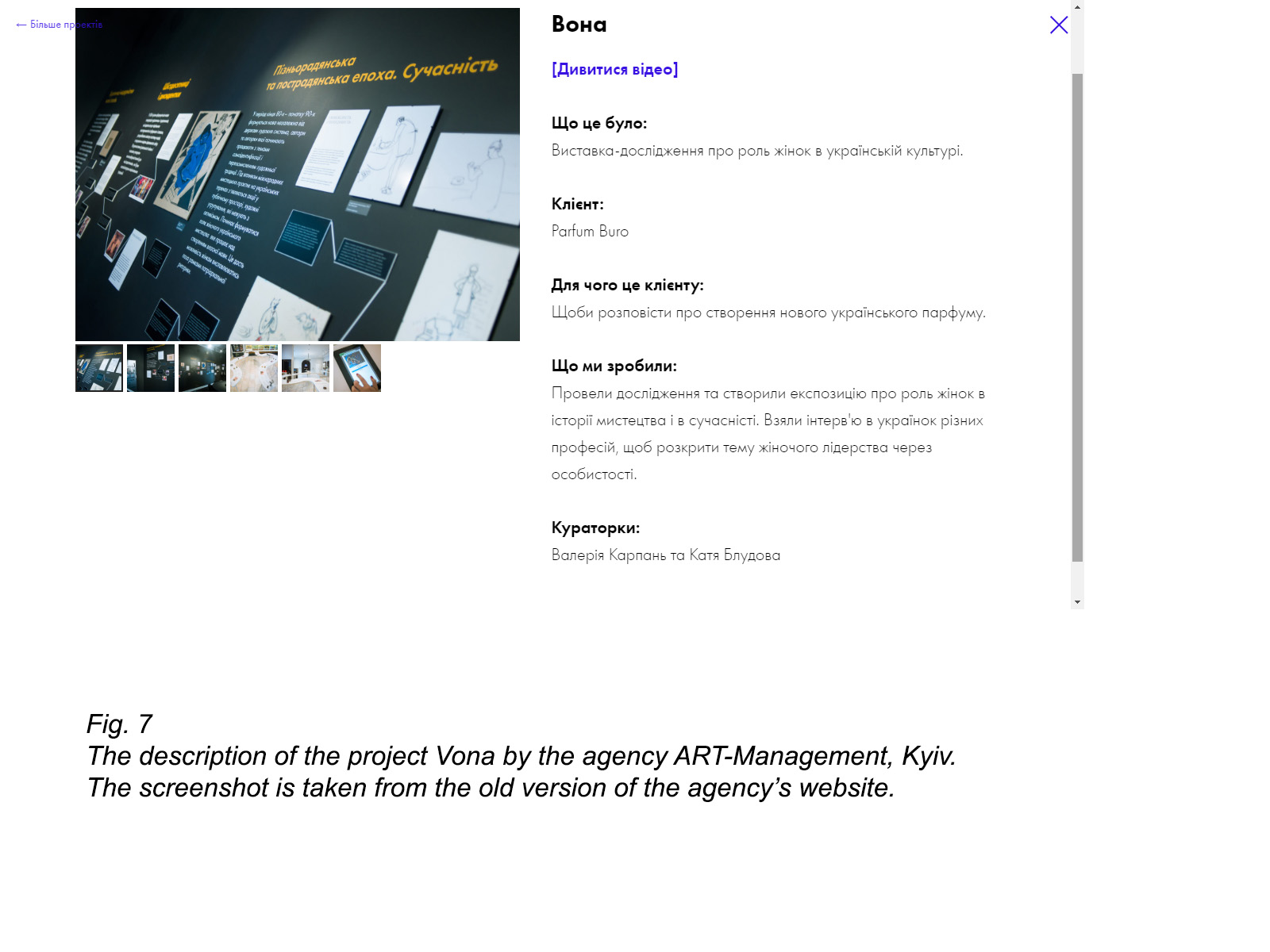
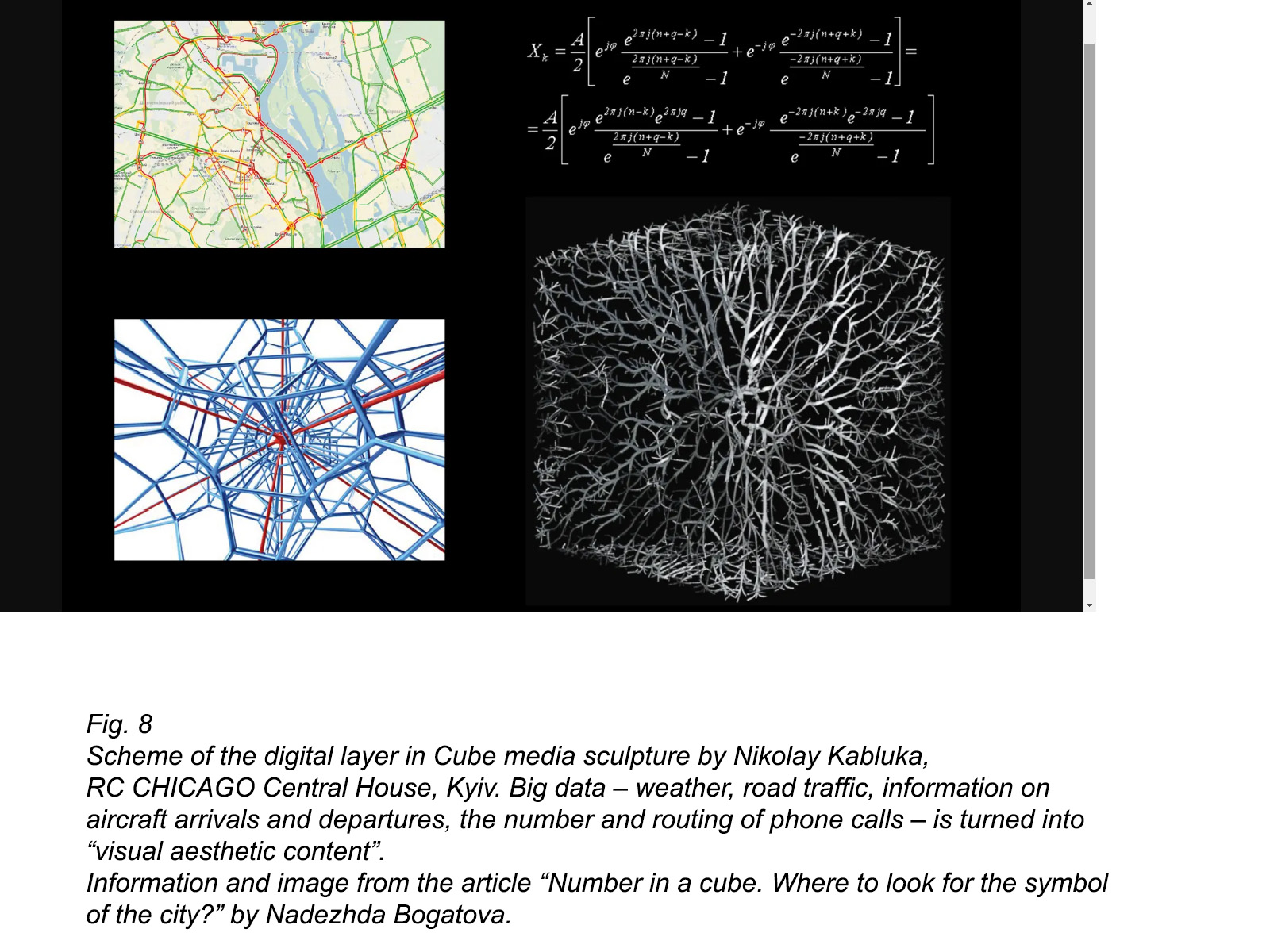
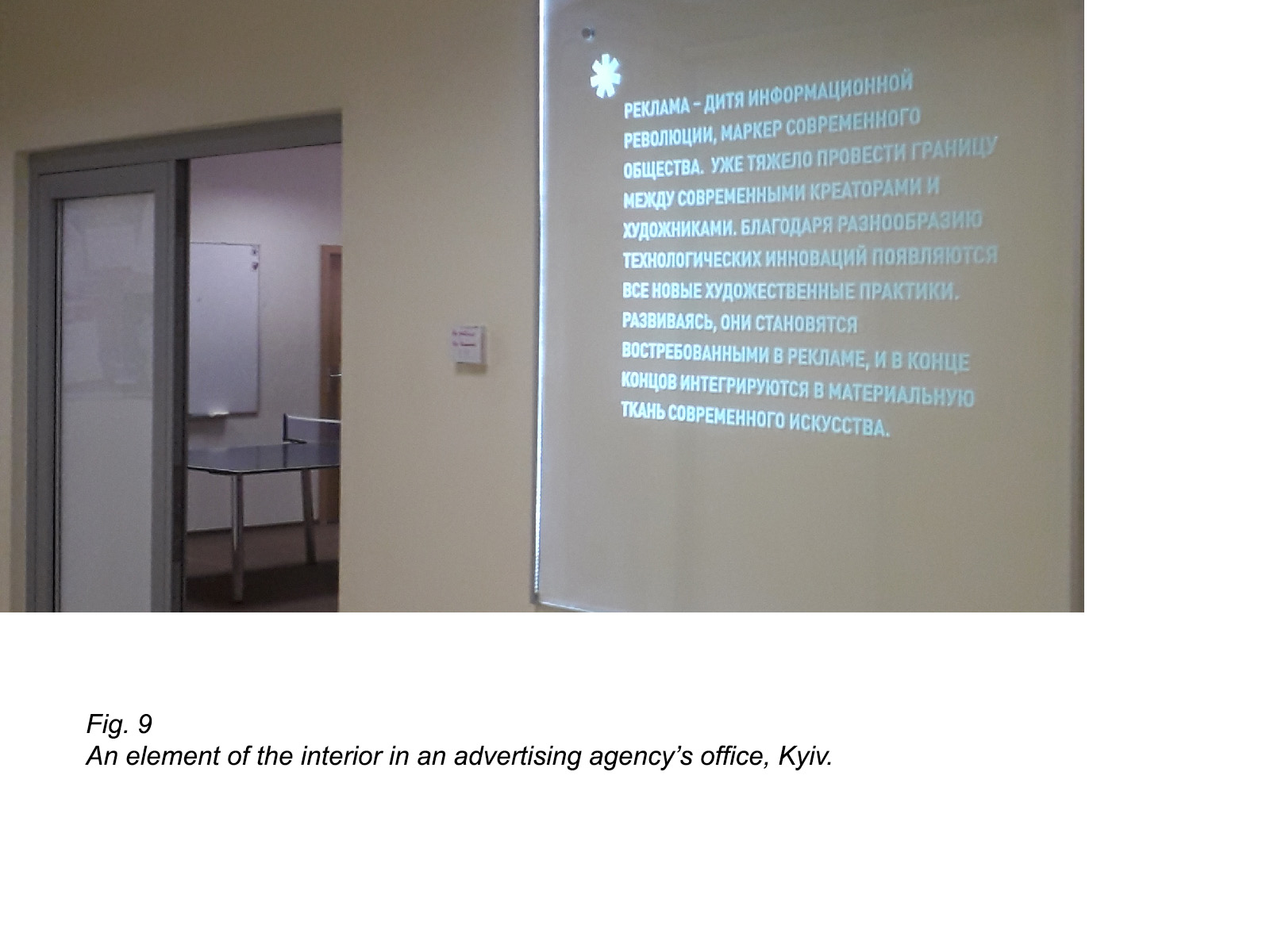
“‘Artists’ are the people who stare out, accusingly and seductively, from billboards and magazine advertisements”,[5] wrote Allan Sekula in the late 1970s, with a view to the image built up around the figure of a free creator. The third segment is interdependence between artistic research and the modern economy, aimed at creativity and cognition. Art is always a part of the economic structure and since recently it has been also a model of success for neo-liberalism. A successful artist today is not a persecuted individual but an in-demand entrepreneur who has accomplished everything owing to self-exploitation (or even exploitation of not only one’s self) and outstanding creative talents, who sprints enthusiastically towards each new project. It’s an artist who travels a lot and thrives without social benefits and job security. This image of an artist largely represents unattainable dreams and endeavours in the realm of precarious work.
International foundations and institutions engage artists not just to help them create a piece of art or make a critical statement. What’s important is their very presence, the demonstration that there’s an opportunity to act freely, have unalienated work and be rewarded for it. For a country that claims to bank on startups, unsecured entrepreneurship and labour and artists’ work easily fit into required messages. Ukraine indeed expands its role as a low-priced outsourcing centre for digital products and services, from IT solutions to video production. In fact, behind the idea of a ‘startup nation,’ it’s cheap intellectual labour which is being advertised on international markets and which is in steady demand. Art here is intended to be a showcase of creativity. Official governmental policies regarding art declare their dedication to stimulating creative industries development. Thus, a Cabinet of Ministers’ decision of 24 April 2019 (№265-р) approved a list of types of economic activity attributed to creative industries. Painting, sculpture, dance, video, cinema, programming, marketing, and PR co-exist in this list. From the government’s perspective, all these practices are equal and each fulfils its role.
The Ukrainian Cultural Foundation (UCF) has been among the largest Ukrainian financial donors during recent years. It uses the expression ‘culture and creative industries’ in the documentation and aims at integrated development. It is significant that, for instance, in the Ukrainian Act ‘On State Assistance,’ all projects funded by the UCF are treated as a separate category. Since their support isn’t regulated by the government, they don’t jeopardise the competition or hurt the market but, apparently, perform a societal function. In the article Innovation as a lifestyle in the 21st century[6] published on UACulture, the website presented as an analytical media source of the UCF, it’s clearly established that indicators of innovativeness, competitive performance, and investment appeal should be applied to the sectors of culture and arts. In this regard, artistic research becomes a potentially favourable type of projects, with a possible detailed description of the stages and value and clear budgeting.
The issue of education is equally important for combining art and creative industries. As we stated before, governmental educational institutions in Ukraine either ignore the field of contemporary art or approach it to a limited extent. But as the market rule teaches us, where there is demand, there will be supply. For example, the Contemporary Art Course I was lucky to take was launched on the basis of the School of Visual Communications, rather concentrated on interacting with design and production. There are Art Management and Contemporary Art courses in the Kyiv Academy of Media Arts (KAMA), which is a key talent provider for creative industries of the capital. In both cases, one cannot say that business intrudes into the very educational program. The question is, how the presence of contemporary art allows business projects to boost their attractiveness and significance in the eye of a target audience, current and future creative workers.
The figure of a creative industries worker itself is changing. Today’s role model is not an infantile advertisement genius from the 1990s. It’s more of a rational researcher who monitors tendencies while searching for insights. Advertising concepts (in broad terms, including political marketing as well) don’t so much provoke as fit into expectations because they are based on social science data analysis and a play of stereotypes. For a creative worker, the figure of a researching artist is relevant and understandable. They both know the price of the analytical approach. Argumentation integrated into artwork (timelines, consequences, typologies) allows working under the same principles as machinery for data processing. It’s fair to say that in terms of content, art more often aims to develop a counter-narrative. But it’s important to consider this exact adoption of the principles of action and impact that implicitly repeat the logic of what can be accounted and estimated. It’s just that a little more than generally accepted is taken into account.
Art becomes involved in those process which Armen Avanessian calls the Big Dicdata regime, in which private corporations and secret service agencies compete for data as the main instrument of control in the modern world[7]. As a matter of fact, Avanessian suggests a strategy of resisting this process by using it – he suggests the formation of a civil secret service organization. This institution would be able to establish a new ethical data regime and redistribute relations of power in that territory. This concept is in step with the idea which I think is the most promising for artistic research. It’s the idea of transforming pieces of research from an aesthetically favourable and safe object to an attacking structure which creates temporary alliances and alternative platforms on top of the existing institutions and other centres of knowledge and meaning production.
If that doesn’t happen, artistic research has every chance to vanish into a beautiful package of data. A research-backed exhibition Vona by the ART-Management agency represents such a case. Officially, it’s dedicated to the role of women in Ukrainian society but its actual task is to ‘tell about the making of a new perfume.’ This approach, in fact, indicates an important thing: it demonstrates that for advertisers, the aesthetics of research can be what consumption gets hooked on. It means that at this stage, research itself can be a desired object. This is another argument for using the potential resource of research to a greater extent than just to make it into exhibitions.
The General Scheme

In this scheme I’ve suggested, all dots are equal and tensions appearing between them allow interacting with different contexts and extract valuable data from there for non-purpose use. Artistic research shouldn’t be quickly legitimised just as another piece in an exhibition but should become a means of intrusion, the Trojan horse. In The Coming Insurrection, The Invisible Committee portrays research as a medium of learning principles of the world structure and order in the most pragmatic manner, in order to use this knowledge in the interest of the oppressed.
It’s important to understand that getaways from the field of art can be destructive – for instance, when in the areas recognised as underdeveloped, they bring side effects such as elements of a neo-liberal economy with its dependence on project funding and a constant need for PR. At the same time, this approach can be constructive, particularly when art manages to sneak into the field of power and distribution of funds and knowledge where art is not expected or is perceived as nothing more significant than a decoration element.
“The extradisciplinary ambition is to carry out rigorous investigations on terrains as far away from art as finance, biotech, geography, urbanism, psychiatry, the electromagnetic spectrum, etc.,” writes Brian Holmes in his article Towards a New Critique of Institutions, “to bring forth on those terrains the “free play of the faculties” and the intersubjective experimentation that are characteristic of modern art, but also to try to identify, inside those same domains, the spectacular or instrumental uses so often made of the subversive liberty of aesthetic play.”[8] Changing the optics from seeing a piece of research as an artwork to seeing an artwork as a research component can be needed to fulfil such an ambition. Artistic research should overcome its limitation to structures of the art system, remaining art at its essence.
[1] Franco “Bifo” Berardi, (Sensitive) Consciousness and Time: Against the Transhumanist Utopia // e-flux, #98, February 2019
[2] Isabelle Graw, High Price: Art Between the Market and Celebrity Culture, 2009
[3] Seth Price, Dispersion, 2002
[4] Markus Degerman, Research as Aesthetics // Chto Delat #17: Debates on the Avant-garde
[5] Allan Sekula, Dismantling Modernism, Reinventing Documentary (Notes on the Politics of Representation) // The Massachusetts Review, Vol. 19, No. 4, 1978
[6] Кива Наталя, Чужинова Ірина. Іновація як стиль життя у ХХ столітті [Kyva Natalia, Chuzhynova Iryna, Innovation as a lifestyle in the 21st century]
[7] DISCREET, An Intelligence Agency for the People
[8] Холмс. Б. К вопросу о новой институциональной критике [Brian Holmes, Towards a New Critique of Institutions] // Художественный журнал, 2008, № 68/68
–
Pavel Khailo is an artist and researcher. Lives in Kyiv.
–
